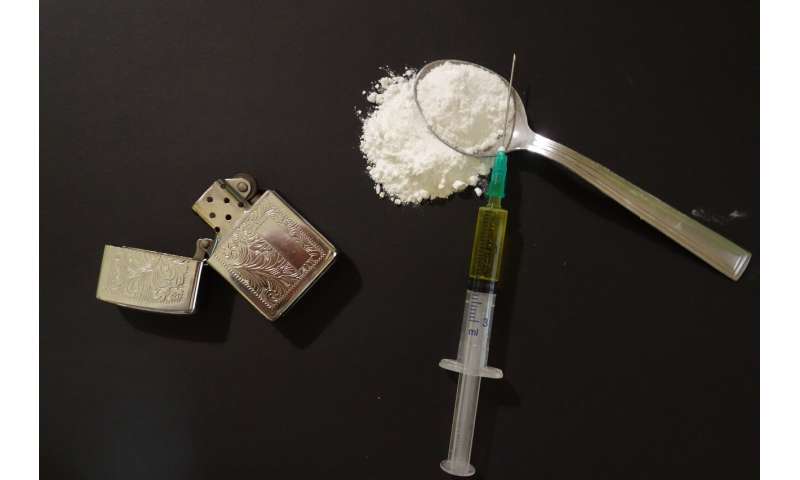
In the first three months of 2020, fatal drug overdoses nationwide rose by about 16%, compared with the same period a year before, new data from the U.S. Centers for Disease Control and Prevention show.
The new figures cover preliminary reports of fatal overdoses around the country from January through March, the month when the first lockdowns prompted by the coronavirus pandemic began.
Pennsylvania saw about a 4% increase in drug deaths in the 12-month period between March 2019 and March 2020, compared with the previous 12-month period. New Jersey’s figures jumped 2% in that time; in Delaware, overdoses skyrocketed by more than 16%.
The numbers alone can’t provide a complete picture of how the pandemic has affected people with addiction. But advocates have been closely watching overdose rates since the lockdowns took effect, fearing that the isolation and economic distress brought on by the pandemic might push people to more problematic drug use, potentially accelerating a disturbing trend that had taken hold when the coronavirus struck.
Fatal overdoses have been on the rise since at least last summer, after they had dropped in 2018—the first decline in decades.
The increase in overdose deaths “predates the pandemic. I wouldn’t say the rise, especially what we’re seeing in the 12 months ending in March 2020, are due specifically to the pandemic, but in next month’s release—for April, May, onward, we’ll probably see more of the effect,” said Farida Ahmad, the CDC’s mortality surveillance lead.
She said fatal overdoses due to opioids have been driving most of the increased deaths. But in some areas, deaths involving stimulants like cocaine and methamphetamine have been rising since last summer as well.
Still, at the federal Substance Abuse and Mental Health Services Administration, officials have been receiving reports of rising overdoses around the country since the pandemic lockdowns started.
“People are quite isolated—people with substance use disorder really rely on person-to-person contact, on emotional supports that help them not to use,” said Elinore McCance-Katz, the Assistant Secretary of Health and Human Services for Mental Health and Substance Use.
“When you’re restricted to your home, when you’ve lost your job and can’t work, when your income has declined, you don’t have a lot more to do than go back to what you might have been doing before. We know people are relapsing.”
McCance-Katz said that, to combat such feelings of isolation, addiction treatment facilities that closed during the pandemic or switched to telehealth should consider re-opening with changed hours, smaller group sessions and increased safety precautions, including mask policies and regular disinfection. “If we can’t provide services safely, it doesn’t matter if we reopen—people won’t come,” she said. “How can we do safely do that so that Americans can get the care and treatment they need? We don’t want people to neglect their health.”
In 2019, more Delawareans died with fentanyl—the powerful synthetic opioid that’s behind most of the Philadelphia region’s overdose deaths—in their systems than in the year before, said Alexis Teitelbaum, the acting director of the state health department’s Division of Substance Abuse and Mental Health. When the pandemic hit, state officials feared even worse to come.
“What we’ve seen the last few months have presented our state with so many economic and social shifts. It’s hard to predict these things, and we know they contribute to behavioral health challenges. What we’ve really seen is an increase in the amount of loneliness that individuals are experiencing,” Teitelbaum said.
It’s too early to know exactly what has happened with overdoses during the entire pandemic, she said, but the state has worked over the last six months to get people into treatment through telemedicine, distribute the overdose-reversing drug naloxone, and publicize a 24/7 hotline, 833-9-HOPE-DE, to find substance use treatment.
In Philadelphia, drug overdoses through June were about the same as they were the year before, but the demographics of fatal overdose victims had shifted from majority white to majority Black. That’s a more dramatic reflection of a trend emerging locally and nationally for several years. The new CDC data show that 16% of drug deaths in the first quarter of 2020 occurred among Black Americans—as opposed to 14% in the same quarter in 2019.
As they are nationally, cocaine and methamphetamine overdoses are on the rise in Philadelphia as well.
“If you think about that year ending in March, what we have seen steadily since 2014 is a slow adulteration of the heroin supply with fentanyl, to the point we’re at now, where 80% to 90% of what is sold as heroin is really fentanyl,” said Silvana Mazzella, associate executive director at Prevention Point, the public health organization that serves Philadelphians in addiction. “We had that happen in the heroin supply. And then, I’d say, starting about three or four years ago, there was the peak of fentanyl as an adulterant in powder cocaine and crack cocaine, and possible other substances.”
As data continue to emerge around the pandemic’s effect on overdoses, she said it is essential that public health officials and advocates around the country find ways to help people with addiction. Making treatment accessible is crucial, especially when treatment centers, like many health-care facilities, are struggling due to the pandemic, she said. And naloxone distributions and trainings need to continue even when gatherings are limited due to social distancing requirements.
Source: Read Full Article